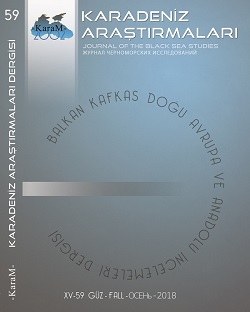Atebetü’l-Hakâyık’ta Bir Emir Eki
An Imperative Suffix In Atebetü'l-Hakayık
Author(s): Vugar SultanzadeSubject(s): Theoretical Linguistics, Studies of Literature, Morphology, Turkish Literature
Published by: Karadeniz Araştırmaları Merkezi
Keywords: Atebetu’l-Hakayik; Qarakhanid period; Imperative mood; the suffix -A; the morpheme -sAnA;
Summary/Abstract: Atebetu’l-Hakayik contains three different morphemes for the second singular imperative. One of them is zero (null) morpheme, second one is -GIl, and the third one is -A. The first two morphemes have been used much more than the third one in Atebetu’l-Hakayik, as well as in the other sources of the Qarakhanid period; and moreover, the related literature deals generally with them when the imperative mood is in question. The third morpheme has not been approached as a special study until today. The article deals just with this morpheme. The morpheme -A treated generally as an emphatic or intensive particle. But as we see in Atebetu’l-Hakayik and other sources, the morpheme - A (as well as the suffix -GIl) was used for softening rather than for strengthening the order. The imperative mood does not mean just an order, a command; it includes also request, suggestion, recommendation and other functions. In the examples from Atebetu’l-Hakayik, the suffix -A is always used in a suggestion and advice function, and besides, for just for the second singular imperative. This limitation is the main proof that the morpheme is rather an imperative suffix than a particle. The article, where the differences between this morpheme and the real A particle are listed, presents other proofs as well. Information about the etymology and historical development of this suffix, as well as information on the use and functions of its traits in our days is also given in the article in comparison with the Qarakhanid period.
Journal: Karadeniz Araştırmaları
- Issue Year: 2018
- Issue No: 59
- Page Range: 297-305
- Page Count: 9
- Language: Turkish

